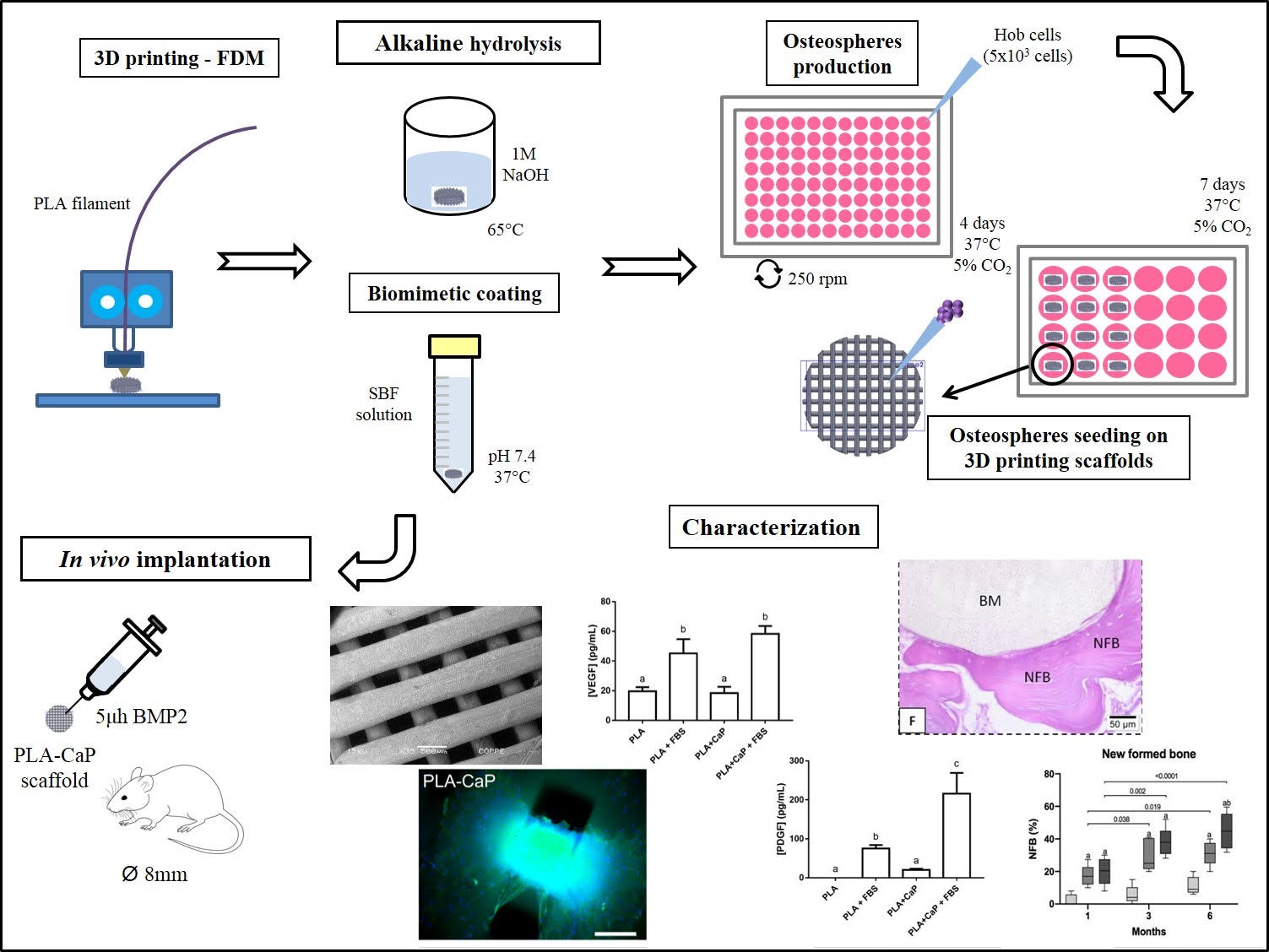This study aimed to assess the response of 3D printed PLA scaffolds biomimetically coated with apatite on human primary osteoblast spheroids and evaluate the biological response to its association with Bone Morphogenetic Protein 2 (rhBMP-2) in rat calvaria. PLA scaffolds were produced via 3D printing, soaked in simulated body fluid (SBF) solution, and characterized by physical-chemical, morphological, and mechanical properties. The in vitro biological response was assessed with human primary osteoblast (HOb) spheroids. The in vivo analysis was conducted through the implantation of 3D printed PLA scaffolds either alone, covered by apatite (PLA-CaP) or PLA-CaP loaded with rhBMP-2 (PLA-CaP+rhBMP-2) on critical-sized defects (8 mm) of rat calvaria. Increased cell adhesion and in vitro release of growth factors (PDGF, bFGF, VEGF) was observed for PLA-CaP scaffolds when pre-treated with FBS. PLA-CaP+BMP2 presented higher values of newly formed bone (NFB) than other groups at all experimental periods (p<0.05), attaining 44.85% of NFB after 6 months. These findings indicate that functionalization of PLA scaffolds with biomimetic apatite can improve its biological properties in the presence of complex biological media. Its association with BMP2 may enhance bone repair, suggesting this strategy as a promising candidate for bone tissue engineering.

